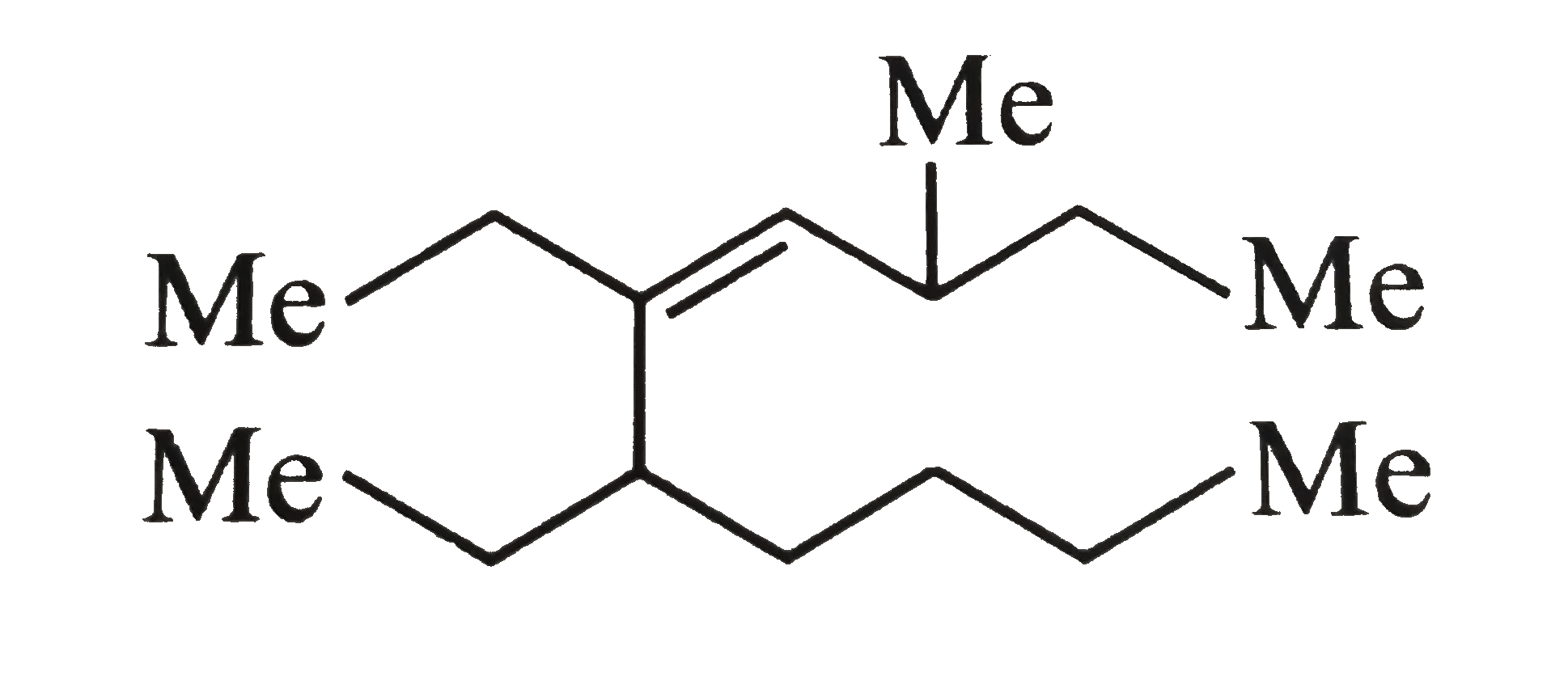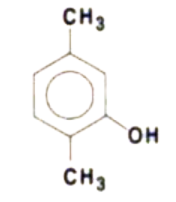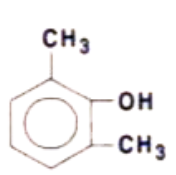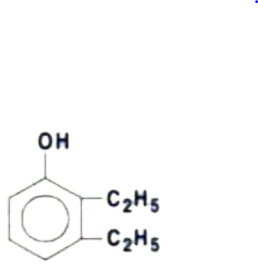Give the IUPAC names of the following compound K3[Ir(C2O4)3]
To determine the IUPAC name of the compound K3(Ir(C2O4)3), we will follow a systematic approach:
Step 1: Identify the components of the compound
The compound consists of:
- A central metal ion: Iridium (Ir)
- A ligand: Oxalate (C2O2−4)
- Counter ions: Potassium (K)
Step 2: Determine the oxidation state of the central metal ion
The overall charge of the coordination complex is neutral, while the potassium ions contribute a total charge of +3 (since there are three K+ ions). The oxalate ion has a charge of -2, and since there are three oxalate ligands, their total charge is -6.
Let the oxidation state of Iridium be x. The equation can be set up as follows:
x+(−6)+3=0
Solving for x:
x−3=0⟹x=+3
Thus, the oxidation state of Iridium in this compound is +3.
Step 3: Naming the ligands
The oxalate ion is a bidentate ligand, and in naming, we use the name "oxalato" for the oxalate ligand. Since there are three oxalate ligands, we use the prefix "tris".
Step 4: Naming the central metal ion
Since the oxidation state of Iridium is +3, we will name it as "iridate" with the oxidation state indicated in Roman numerals as (III).
Step 5: Combine the names
The complete name of the compound is constructed by combining the names of the ligands and the central metal ion, along with the counter ions. The order is:
1. Name the ligands in alphabetical order (ignoring prefixes).
2. Name the central metal ion with its oxidation state.
Thus, the IUPAC name of K3(Ir(C2O4)3) is:
Potassium tris(oxalato)iridate(III)
Final Answer:
Potassium tris(oxalato)iridate(III)
---
The compound consists of:
- A central metal ion: Iridium (Ir)
- A ligand: Oxalate (C2O2−4)
- Counter ions: Potassium (K)
The overall charge of the coordination complex is neutral, while the potassium ions contribute a total charge of +3 (since there are three K+ ions). The oxalate ion has a charge of -2, and since there are three oxalate ligands, their total charge is -6.
x−3=0⟹x=+3
The oxalate ion is a bidentate ligand, and in naming, we use the name "oxalato" for the oxalate ligand. Since there are three oxalate ligands, we use the prefix "tris".
Since the oxidation state of Iridium is +3, we will name it as "iridate" with the oxidation state indicated in Roman numerals as (III).
The complete name of the compound is constructed by combining the names of the ligands and the central metal ion, along with the counter ions. The order is:
1. Name the ligands in alphabetical order (ignoring prefixes).
2. Name the central metal ion with its oxidation state.
Potassium tris(oxalato)iridate(III)
Potassium tris(oxalato)iridate(III)
Topper's Solved these Questions
- COORDINATION COMPOUNDS BOOK - ICSECHAPTER - COORDINATION COMPOUNDS EXERCISE - EXERCISE (PART - I OBJECTIVE QUESTIONS)
22 Videos
- COORDINATION COMPOUNDS BOOK - ICSECHAPTER - COORDINATION COMPOUNDS EXERCISE - EXERCISE (PART - I OBJECTIVE QUESTIONS) (Multiple Choice Questions)
30 Videos
- COORDINATION COMPOUNDS BOOK - ICSECHAPTER - COORDINATION COMPOUNDS EXERCISE - ISC EXAMINATION QUESTION (PART- II DESCRIPTIVE QUESTIONS)
39 Videos
- CHEMISTRY-2020 BOOK - ICSECHAPTER - CHEMISTRY-2020 EXERCISE - Question (Answer the following question)
4 Videos
- d- AND- f- BLOCK ELEMENTSBOOK - ICSECHAPTER - d- AND- f- BLOCK ELEMENTSEXERCISE - ISC EXAMINATION QUESTIONS (PART-II)(DESCRIPTIVE QUESTIONS)
15 Videos
Similar Questions
Give the IUPAC name of the following compound:

View SolutionGive the IUPAC name of the following compound :

View SolutionGive the IUPAC name of the following compound.

View SolutionGive the IUPAC names of the following compounds :

View SolutionGive the IUPAC names of the following compounds :

View SolutionGive the IUPAC names of the following compounds :

View SolutionGive the IUPAC names of the following compounds :

View SolutionGive the IUPAC names of the following compounds :

View SolutionGive the IUPAC names of the following compounds :

View SolutionGive the IUPAC names of the following compounds :

View Solution